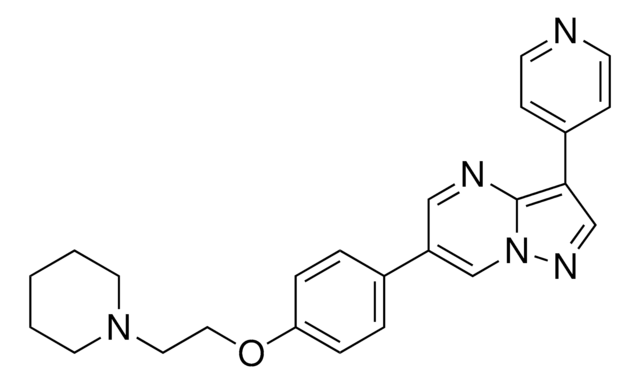540223
Purmorphamine
≥98% (HPLC), liquid, Hedgehog signaling activator, Calbiochem
Synonym(s):
InSolution Purmorphamine
About This Item
Recommended Products
product name
Purmorphamine, InSolution, ≥98%, 50 mM in DMSO, induces osteoblast differentiation in C3H10T1/2 multipotent mesenchymal progenitor cells
Quality Level
assay
≥98% (HPLC)
form
liquid
manufacturer/tradename
Calbiochem®
storage condition
OK to freeze
desiccated (hygroscopic)
protect from light
storage temp.
−20°C
General description
Application
Packaging
Warning
Physical form
Reconstitution
Other Notes
Wu, X., et al. 2002. J. Am. Chem. Soc.124, 14520.
Legal Information
signalword
Warning
hcodes
Hazard Classifications
Muta. 2
Storage Class
10 - Combustible liquids
wgk_germany
WGK 2
flash_point_f
188.6 °F - closed cup
flash_point_c
87 °C - closed cup
Certificates of Analysis (COA)
Search for Certificates of Analysis (COA) by entering the products Lot/Batch Number. Lot and Batch Numbers can be found on a product’s label following the words ‘Lot’ or ‘Batch’.
Already Own This Product?
Find documentation for the products that you have recently purchased in the Document Library.
Our team of scientists has experience in all areas of research including Life Science, Material Science, Chemical Synthesis, Chromatography, Analytical and many others.
Contact Technical Service








